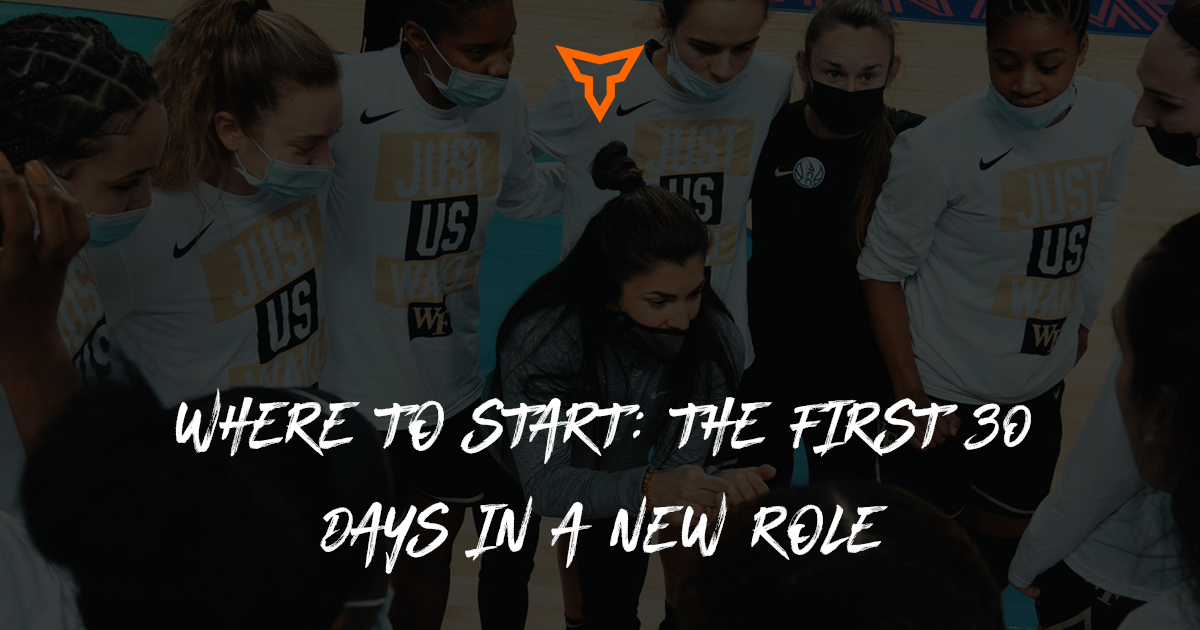Guest author Jeff Stern is currently a Sports Performance Coach with the UMass Football Program. He's had previous stops at Iowa, Central Michigan, and Merrimack.
Welcome to the wild west. The year is 2025, and the world of athletics is primed for an explosive push into the new frontier. The lawmen, AKA administrators and head coaches, are trying to figure out how to handle this rapid expansion. The gunslinging cowboy, AKA the student-athletes, has no regard as they ride their stallions deep into the new frontier. The gangs and businessmen, AKA third-party influence, see an opportunity with all the new land up for grabs. The frontier folk, AKA people who are just trying to survive in this new environment, are seeking understanding.
Reminder - this isn’t 1865. It’s right now, and you are a major player in the game. And if you can have a good understanding of the direction these forces are heading…you can then navigate this new frontier better. You become a pioneer.
To know where we’re going, you must know where we’ve been.
I believe that significant change began with the COVID pandemic. NCAA athletes could not only redshirt but also use their "COVID year," leading to older, more mature athletes. Almost immediately after the new “COVID year” rule, the transfer portal rules changed, too. Athletes can now change institutions or teams at will. Here is a quick visual from Google AI that will catch you up if you haven’t been in the loop:
Along with these rapid changes in eligibility and ability to transfer, new NIL rules came into effect. Student-athletes can now profit from their name, image, and likeness. Here is another great visual from Google AI:
Three major changes have happened over the last few years. You have athletes in college for longer, who can switch teams and get paid to do it.
The integrity of collegiate athletics is being tested, but there is a change in the wind. The lawmen are getting back on their horses and organizing a response. The gunslinging cowboy is learning that if they test the law, they might have to face the law.
ESPN Analyst Kirk Herbstreit spoke about NIL as “basically marketing… It’s not a pay for play situation where booster whoever from whatever school…[decides] let’s go spend ten million dollars…”
A major development in this process has happened over the last year. You will begin to hear “revenue sharing” more often. Revenue sharing is a more regulated approach to paying athletes. Schools can now pay athletes, and it puts the power to manage these situations and external influence in the hands of the conferences, rather than in the NCAA. It may look like a more professional and regulated approach to paying athletes. This is a good thing. Athletes can now receive financial support from three different avenues:
- Scholarships
- NIL Opportunities
- Revenue Sharing
Check this article out for more information:
So, where is the Sports Performance Coach in all of this?
Frankly, most of this is out of the performance coaches’ control, so you must stick to what makes the performance coach so valuable in any organization:
Culture Development – No One Is Above The Program
Money, especially in young people who don’t grasp concepts like financial literacy, can easily create destructive power dynamics and give bad leaders influence over the team. When you have a team and someone is getting paid more than someone else, it’s because the decision-making bodies in the organization value that person more. If you let it, power dynamics will develop, and the team's mission can become skewed.
For example, if an athlete gets paid and is seen as having more value, that serves as an invisible title or formal authority given to that person. This is called legitimate power. Another example is that if a team gives an athlete a lot of money to play and that athlete decides not to fulfill their commitments, they can threaten to run away with a portion of the team’s value. This is called coercion. Power dynamics like these can negatively influence a team’s culture.
As the sports performance coach, you can hold the line. You can make sure the team's mission is always clear, regardless of the forces at play. The sports performance coach has the unique opportunity to have the best pulse on team culture and where it’s heading. This is because the sports performance coach has the most contact points with the players throughout the year. This not only allows you to cultivate the right values in a program with everyone on the team, but it creates avenues of communication to the sports coach, who has the ultimate power to right the ship.
If it’s a team sport, it will always be about the team. When one person on the team starts to take away from the momentum of the program, it’s time to act. Money or not, you cannot let them cut corners or bring down others. Great teamwork and collaboration towards the team vision are the goals. No one is above that. No one is above the team.
Coaching Pedagogy and Values – The Compass Hasn’t Changed
There is a ton of gray area in terms of what true north is for a performance coach these days. The “right” way to coach and develop athletes is becoming more challenging to see. However, it’s there and hasn’t changed much. When navigating this field, you need a compass. Your compass is the guiding values/principles that dictate your actions. These values/principles will always be more important than any set or rep you put on paper.
When it comes to being a great coach, two principles have been emphasized in this new age of athlete autonomy.
1. Relationships
You can’t cultivate growth without a good relationship. The fundamental principle of coaching. You serve them and they don’t owe you anything. It doesn’t matter if it’s a fifth-year player who has had five different coaches or just one coach. It doesn’t matter if they get paid 250k from the elusive “NIL Collective.”
Your job is to develop a relationship with them, and the faster you can do that, the faster you can get to work with that athlete to help them grow. Development means different things now. They might transfer in as a proven fifth year with exceptional maturity. You now work with that athlete and communicate with them differently than your true freshman. You might only have an athlete for a year or less. It starts with a good relationship. Do whatever it takes to help that person. Cultivate trust professionally and genuinely.
2. Adaptability
This is an age of abundant information and rapid change. Are you learning and absorbing information daily about this new age? Are you staying ahead of the game from an administrative standpoint? From a training standpoint, to accommodate these new athletes? From a staff development standpoint to give your people the information they need to work with these athletes? Are you still enthusiastically attacking multiple roles in the organization?
This is called wearing multiple “hats.” Like being adaptable, you must be able to fulfill multiple roles. When you finish a lift group, are you able to take off your coach hat and put on your administrative hat and walk upstairs to the head coach? Do you have the necessary information to update and communicate solutions up the chain? Can you then head back to the weight room and put on your mentor hat an assist any student-athletes that need your help?
You must be a hat collector.
This means embracing and engaging in any roles that come your way that will help the student athlete grow and develop. It comes back to facilitating a great relationship and building trust with all those around you. The willingness to do whatever it takes to serve your people. Coach, administrator, support staff, mentor, etc.
Although the LTAD Model Has Shifted, Human Development Hasn’t
LTAD stands for long-term athletic development.
We went from fourth- and fifth-year athletes to a twenty-five-year-old in his seventh year. Not only did we begin to have older, more experienced athletes, but we also began to get athletes who have had multiple head coaches. Which means they have had multiple strength and conditioning coaches. Which means you didn’t have a solid gauge on their physical development or true state of physical ability (given injury history, etc). The nice romantic vision to gradually grow and cultivate an athlete to their highest physical peak by year four is now out the door.
You must work and manage all athlete time frames and training ages:
- The mid-year freshman who is 17 and still in high school, but is training with the team during the off-season. They have to leave for prom in the Spring.
- The brand new 1st year freshman.
- The true sophomore, junior, and senior.
- The redshirt variations of all of the above.
- The 5th-year grad who’s somehow still a junior on the field.
- The athlete you have had a real 4-year progression with, which is the minority for some programs at this point.
- The transfer who is using their last year of eligibility with you. Typically referred to as “unc” or “grandma.”
The well-known coaching concept of having a great “coaching eye” has become more important. You need to figure out where an athlete is quickly. As the world moves at the speed of technology, we now have tools that can give us an objective evaluation of physical ability that a mere coaching eye can’t give us. But not even with a great coaching eye and objective numbers from all the technology in the world, it is still challenging to truly get a read on whether they can play ball or if you are giving them what they need. It has become tougher to assess the human in front of you.
So, when it comes to the “Xs and Os,” how do you implement a program that addresses all these different training scenarios? Do you make a super individualized approach, or do you keep it simple?
The answer is you keep it simple at first and then use your coaching eye and objective measurements to progress as necessary. Not much has changed there. The strength and conditioning professional has an opportunity to be the stable piece in an organization, working through the current state of athletics. In a world of change, the physical development of a human being hasn’t changed.
Conclusion
In my current position, we are experiencing all seven of those scenarios previously mentioned. We have the privilege of working with a team that transferred in twenty-six players this year, while retaining around two-thirds of the former team. There is a multitude of training experiences from all levels in the building. We just finished our first true Winter training phase. We used common sense and a well-thought-out linear training progression. We gave them a minimal effective dose. Enough of a stimulus to get to the edge to drive adaptation.
We kept it simple with our biggest weapon being relationships. Most of the team improved from a strength and performance KPI standpoint. Relationships inside the building improved. The athletes have greater capability and are available to play their sport.
Subscribe to our blog
Subscribe to receive the latest blog posts to your inbox every week.
Related posts

Where to Start: My First 30 Days in a New Role

Ohio State Strength Coach Transforms Linebacker


